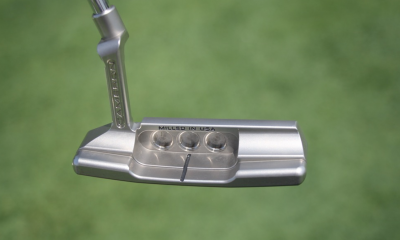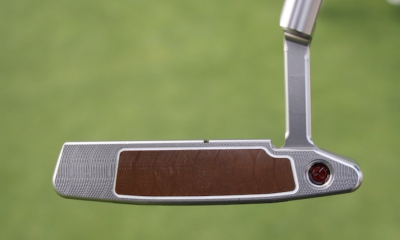Opinion & Analysis
2023 Rocket Mortgage Classic and British Masters: Betting Tips

Working on tee-to-green figures is a given for any golf punter, but there are a few ways to get there.
Over in Detroit, it may seem too easy to say ‘bombs away,’ but with Bryson, Matt Wolff, Joaquin Niemann, Cam Davis and Taylor Pendrith just some of the big drivers that have won or contended, we’ll take that as the metric for success.
British Masters
Back in leafy Warwickshire, the tee to green game is naturally vital, but there have been a variety of ways to get there.
Whether it’s off the tee or via the irons, the leaderboards of the past two runnings have contained nine of the top 10 from peg to short stuff. Enough evidence for me.
Let’s have the ‘simple’ formula of players in some form over the past few weeks, along with form at similar tree-lines or narrower tracks.
Contenders over the past couple of years Sebastian Soderberg, Richie Ramsay, Richard Bland and Guido Migliozzi may total a small sample but all point to form at Crans, Kenya, Valderrama and the AD Links, little surprise to anyone looking for players that thrive on quality ball-striking.
In that regard, Jordan Smith must hold interest even at 18/1. His latest outing resulted in a top-20 at the US Open and followed a brave attempt at regaining his European Open title. Still, I found it tough to split him and Adrian Meronk, two of the best players on the tour so have left them alone.
Not long ago, we might have expected Robert MacIntyre to have been contending for favouritism this week, so at double the price of the Polish star, I’ll take a chance that recent changes will see a return to the sort of form that beat Matt Fitzpatrick, Victor Perez and Rory McIlory in Italy in September last year.
Having had the Ryder Cup as his number one target for a while, the significance of that win at this year’s host venue cannot be overplayed. Indeed, recent changes to his coaching staff and caddie can only point to the belief that he has one target in his head.
“It is my main goal, my only goal for the next year,” MacIntyre said after winning in Italy. “I have done it on the golf course.”
He had been doing nothing wrong, but equally nothing outstanding before that second DPWT victory, “but we worked on a few things on Tuesday and Wednesday and I felt so in control of my golf ball this week.”
It’s a similar story coming into the British Masters.
April saw a run of three top-10 finishes, including in Kenya and Korea where, at both, he went off in the final group.
The 26-year-old’s recent improvements, from 68th to 18th in Munich and 80th to 14th at Green Eagle, must surely give him hope for upcoming tournaments, including the Scottish Open and final major of the year.
Last season’s 36th place finish here disguises that he was the only one of the top-10 ranked from tee-to-green that failed to finish in the top-20. Everything fired apart from the putter, with which he lost nearly five strokes on the field.
Runner-up at Hillside in 2019, he has a top-10 around this venue, at Valderrama, Joburg (Bland runner-up, Meronk third) and at the Gary Player Club. It’s a when, not if, and any slight improvement on last week’s gains from the fairway and with the putter will see him right there.
32-year-old Max Kieffer has given his home support much to cheer about when running-up at Green Eagle and finishing third in Muich a couple of weeks later.
Things could have been better for Kieffer, having disputed the lead for much of the European Open, a similar tale to his play-off defeat at the Austrian Open in 2021. That he could compete on a lengthy track that didn’t play to his advantage is a pointer to even better around The Belfry.
A week after the five-hole trial against John Catlin, the German recorded a final round 62 to finish second again, this time in Gran Canaria.
Given Kieffer recently went 16th/5th in Korea and Italy, it’s worth holding onto him when in form. With his stats in rude health – third for driving accuracy, 20th for ball-striking, 34th in greens, and top-30 for putting average, and proven when in form, he goes on the plan.
Guido Migliozzi was a much bigger price when the market opened, but still represents value at 70.1.
The Italian was put in the class of ‘could-be-anything’ after his two impressive victories in 2019, one of which significantly came at the Kenya Open at Karen.
It hasn’t been easy-going since then, but he ran up three times in 2021 – in Qatar (when beaten by a wonder-putt from Antoine Rozner) at Himmerland when thrashed by a rampant Bernd Wiesberger and, in-between, by Richard Bland around here, beaten after having missed a two-putt from a middle distance on the final par-five). The 26-year-old also put up top-10s at Crans and the U.S Open (!) for good measure, whilst a 12th at Karen is no harm.
Guido’s Qatar form links nicely with this week’s defending champion Thorbjorn Olesen, whilst his previous form at Valderrama and the Links give the hope that last week’s 10th is the catalyst for better to come on a more suitable track.
Figures have been trending nicely. Guido had a spurt through April that gave his many supporters real hope. However, after drifting away again, he left Munich recording positives in tee-to-green and putting, and he arrives at a place we know he can play.
I’ll add Ewen Ferguson simply as he is continuing to look too big for a multiple winner.
It is just 14 months since the inexperienced Scot threw away a final day lead in Kenya before winning a grind in Qatar (Meronk third with Justin Harding, a perfect link to all significant tracks, in fifth place).
In August, the 26-year-old waltzed home with a stunning display at Galgorm Castle and would have made it three for the year but for an indescribably brilliant display on the dance floor by Oliver Wilson, whose only previous victory was the Alfred Dunhill Links.
So form ties up nicely, we just need to forgive two recent missed cuts. I can do that.
Fergy’s last eight starts have yielded consecutive top four finishes in South Africa, 10th at the KLM and 14th at Green Eagle, an event at which he held a place in the top-10 for 54 holes. The Scot continues to churn out quality figures for approaches (top-20 for all his last six completed starts) and tee-to-green (plus figures for all six). Should he repeat those, I’m expecting him to leave his two missed-cuts well behind.
Kiradech Aphibarnrat makes no sense stats-wise.
The Thai has had a mixed season, but the best reads well. Alphie has recorded top-six figures for irons and tee-to-green in Singapore (finished 49th), top-10 for both to finish 15th in the Soudal, and eighth for tee-to-green to finish in the top five in the KLM.
It’s clear he has issues away from his irons at the moment, but I can’t forget how he should have won at Wentworth in 2021, and has relatable form at Malaysia, Links, Nedbank and Italy.
It might be an ask on immediate form but it’s in May that he secured back-to-back top-15 finishes in similar company. Back him to do that again.
Rocket Mortgage Classic
Over in Detroit, the defending champion described the course as ‘easy’.
Okay, that’s pretty simple when cruising clear of Patrick Cantlay et al, but with recent rain now making it even easier, think of last week’s form at River Highlands, when softened greens made it a birdie-fest. Who knows what Big Tone will say of it now?
The event itself doesn’t make as much appeal as the one taking place at The Belfry, but I’ll row along with four players that should give us a run.
Up top, it’s tough to split Tony Finau and the red-hot Rickie Fowler.
Finau looks ripe to go well again under even easier conditions than last year’s romp. With three of his five wins coming in 20-under or lower, the drop in grade out of ‘elevated’ status means he has to go well. He would be my choice for those looking for a safe place return at worst.
Another safe conveyance should be Sungjae Im, who drives me a bit mad with his lack of wins, but for whom this drop from the highest grade should be a boost.
Previous to missing three of his last five cuts, the Korean went on a run of four top-10 finishes in five starts before winning a lesser event on his home tour.
Sixth at Sawgrass works well with previous contenders Bryson, Cam Davis, Taylor Pendrith and Cam Young, while the seventh place at The Heritage works with most of those named, plus Patrick Cantlay, of course runner-up to Finau 12 months ago.
Cantlay also ties form in with the Shriners at Summerlin (see the one-two from 2020), the scene of Sungjae’s most valuable victory (Wolff second, with Aaron Wise being another link between the comp courses).
With Wyndham form in abundance, his best game lines up with Si Woo Kim, a Memorial specialist that helps tie in Cantlay again. KIt also brings in Kevin Kisner, a similar short driver, whose form at Sawgrass and Heritage rides nicely alongside two top-10s around the Detroit track.
Fairway-finding should enable Sungjae to attack the pins as he can, and I can see both him and compatriot Tom Kim giving the Koreans plenty to shout about.
Let’s talk about Tom Kim.
If the comp courses are correct, the 21-year-old’s two victories give him more than leading claims.
A five-shot victor over the first selection at Sedgefield, he then followed up with a three-shot victory over Cantlay and Matt NeSmith, a repeat contender at the Shriners.
Last week’s top-40 at the Travelers could have been so much better but for dropping 10 shots at the start of his back nine through rounds one and three.
Of note, however, is Kim’s final round 65, five-under on the card but one that could have been far better, consisting of six birdies and one eagle. That brings back memories of his final round at Detroit on debut last year, when he shot a best-of-the-day 63.
It’s all coming together after a very respectable top-10 at the U.S Open, and whilst Im has to be priced as he is, perhaps Kim deserves to be.
The hugely consistent Brian Harman is too tempting to ignore, particularly after a closing 64/64 had him run-up to Keegan Bradley last week. That wasn’t the first solid effort from a player that surprised me by being #27 in the world rankings.
Placed many times at Harbour Town, Sawgrass, and Sedgefield, Harman is the unsexy player of the world, never really given the respect his consistency deserves but, with similar conditions in front of him this week I’ll take him to overcome a pair of missed cuts over the last two years.
The diminutive 36-year-old has never played badly here, with a pair of 70s and 71s simply not good enough to make the weekend against low scoring. He hasn’t played here since 2020, but he arrives with his irons good enough to rank him in the top-20 for his last three completed starts.
I was tempted by the case for Taylor Pendrith but it lies purely with the driver and I’m not sure the rest of his current game is anywhere near the right form to exploit it. Instead, go for the totally unexposed Kevin Yu.
Chan-an Yu, or Kevin to his friends, qualified status on the KFT via the PGA Tour’s University programme, a complicated system that rewards the very best of college golfers. His full story is here.
That doesn’t really matter. What does is the excellent start he has made to his PGA Tour rookie season and his mid-season ranking of third off-the-tee, 37th for approaches and a combined ninth for tee-to-green.
Scoring-wise, the Chinese Taipei player ranks in sixth for par-4 birdies or better and 14th for the longer holes, expected of someone averaging 308 yards off the peg.
Form is improving too in 2023, an opening 20th in Hawaii followed by 44th at Torrey Pines, seventh place at Pebble Beach and last week’s 49th at River Highlands, dropping from inside the top-10 at halfway. That follows some progressive hints at the end of 2022 when top-20 at the Sanderson Farms and third in Bermuda.
An Arizona graduate, Yu was third in the 2019 NCAA D1 Championship, behind none other than Matt Wolff, and in the same year won the Australian Master of the Amateurs, held at Royal Melbourne, a course that hosted Aaron Wise’s victory three years previously.
Yu’s glaring weakness is the short game but that will come. For now, get with a player for whom there is no visible ceiling and who brings what might be the most vital asset to the table.
Recommended Bets:
British Masters
- Robert MacIntyre
- Max Kieffer
- Ewen Ferguson
- Guido Migliozzi
- Kiradech Aphiebarnrat – Top-20
Rocket Mortgage Classic
- Tom Kim
- Sungjae Im
- Brian Harman
- Kevin Yu
- LIKE2
- LEGIT0
- WOW0
- LOL0
- IDHT0
- FLOP0
- OB0
- SHANK0
Opinion & Analysis
The Wedge Guy: What is a “wedge” anyway?
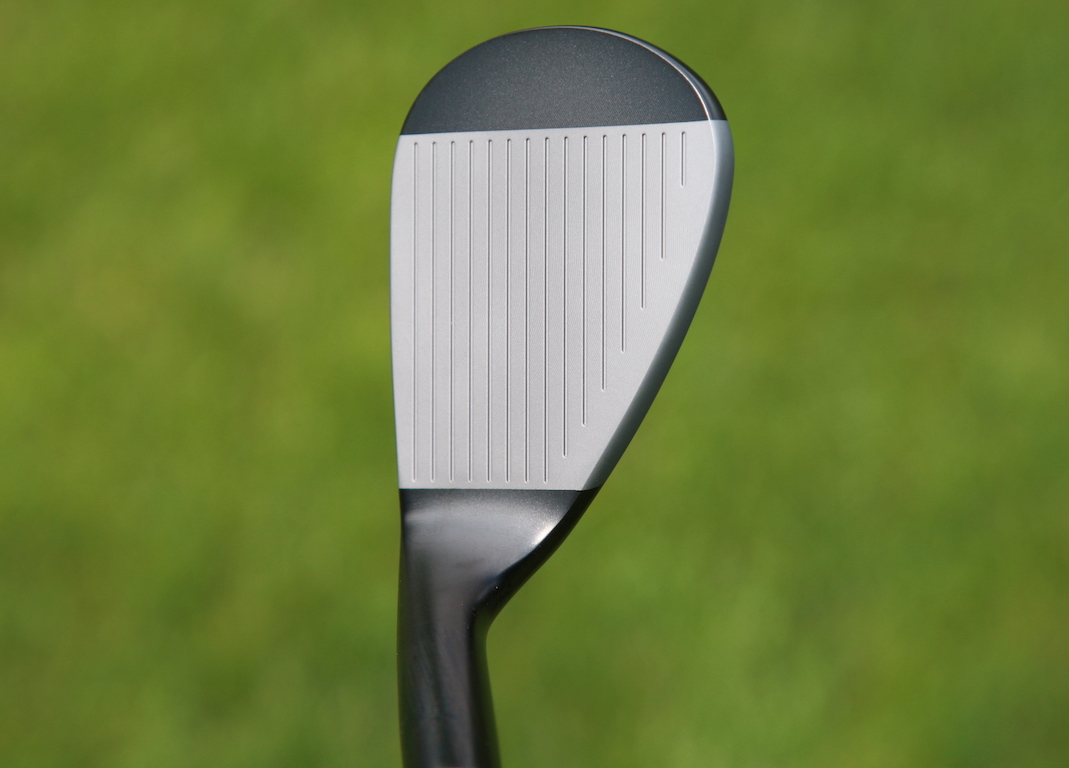
This week’s post is somewhat of a continuation of the recent path we’ve been on, discussing the nuances of those high-loft clubs at the short end of our sets – those specialty clubs we call “wedges.” The real question might be:
“What is a ‘wedge’ anyway?”
Can that name be given to any iron-type club simply based on its loft? And if that’s the defining criteria, where do “wedge” lofts begin? And can clubs of all different design configurations still all be “wedges” just because they fall into that arbitrary range of lofts?
To the first question, my historical research indicates the term “wedge” first came into common use in the 1930s with the invention of the original sand wedge, generally credited to Gene Sarazen. As the legend goes, after flying with Howard Hughes and observing the use of flaps to make the airplane go up or down, he conceived the idea of a downward angle on the sole of a niblick to make it “reject” from the sand. So, after numerous prototypes and testing, the club that came to be known as the “sand wedge” was born.
Those clubs were about 55-56 degrees of loft, and quickly became widely adopted because of this revolutionary performance from bunkers. My guess is the term “wedge” was applied to that club because that’s exactly how you used it – you “wedged” the club between the ball and the turf – loft made the ball go up and the sole made the club “bounce” off the turf.
The professionals of the 1940s and 1950s began to use their sand wedge for more specialty shots around the greens, but most often relied on their highest lofted iron for most routine pitch shots. In sets back then, that club had 50-52 degrees of loft and was often called a “pitching wedge,” but some labeled it simply a “10-iron,” or in Ben Hogan’s case, the Equalizer.
But that club looked like the irons it matched, bearing little resemblance to the specialty “sand wedge” with its big flange and heavy sole, but I really don’t know why it was also called a “wedge.”
As iron lofts began to strengthen in the 1980s, the need for a “gap wedge” came about, as that valuable 50- to 52-degree iron was disappearing. Then at the other end of the set, the “lob wedge” appeared. Both of those clubs bore some resemblance to the sand wedge because they were most often presented as loft extensions in manufacturers’ wedge product lines.
So, now let’s fast-forward to 2023. Most iron sets have a “P-club” of rarely more than 45 degrees, and we’re seeing more and more with as low as 42 degrees of loft. Many of the iron models offer set-matching “wedges” labeled “A”, “G”, “S”, etc. to extend the iron design up into the higher lofts. These all look almost identical to the 6-iron in that set, because this industry is still caught up in the notion of “matched” sets. (But that’s a topic for another day)
In the “wedge” category, product lines can be confusingly broad, with lofts from 46 to 64 degrees and all kinds of specialized sole configurations. So, back to the original question — what is a “wedge?”
Think about it this way.
At the long end of your set, the club with 22 to 24 degrees of loft might be configured as a fairway wood, or a hybrid, or a hollow high-tech “driving iron,” or simply the 4- or 5-iron that matches your irons. Each golfer can determine which configuration serves him or her best at that loft and the distance it produces.
Likewise, the clubs at the higher loft end of your set might look like your 6-iron, or might look like a traditional wedge, or might look like one of the numerous specialty wedges with a wider sole. My “wedge” designs for Edison Golf don’t really look like any of those.
But just like those options you have to build out the long end of your set, each of those various ways to configure a higher-lofted club will produce different results. So, can we really lump all of these high-loft options into a singular category and call all of them “wedges?”
Or is it time to come up with a totally different word to describe those high-loft clubs in our bags that have the assigned task of delivering consistent results at a range of distances as we get closer to the green?
I’m not sure I have the answer, but it should be fun for all of us to stop and ponder the question? Your thoughts, everyone?
- LIKE17
- LEGIT6
- WOW0
- LOL0
- IDHT0
- FLOP0
- OB0
- SHANK4
Opinion & Analysis
The best bets for the 2023 John Deere Classic

Probably not quite the ‘classic’ of its name, but the John Deere provides some recall of the good and bad of golf betting.
Back in 2013, a young Jordan Spieth made his reputation by sinking a 72nd hole bunker shot to put the willies up course specialist and lumpy bet Zach Johnson. As is the way, the Deere Run guru then bogied his final hole, going on to defeat in a three man play-off.
Fast-forward nine years and J.T Poston landed a confident wager in last year’s event, leading all the way to land a comfortable three shot victory. Can’t wait to see which way it goes this time.
Expect birdies galore around the course this week, with very little difficulty in finding fairways.
With most of the field managing to hit the large greens, GIR stats are less worthy than they might otherwise be. Instead, players need to hit it close enough so they make the majority of putts. As with previous winners Bryson DeChambeau and Lucas Glover (to name just two), high-class ball-strikers can give themselves enough chances to land their share of birdies.
Current form looks a must here this week, with cross-over form from Travelers including Spieth, DeChambeau, Daniel Berger and Brian Harman, and Rocket Mortgage champions Cameron Davis and DeChambeau showing up well at this week’s venue, all recording a similar winning score.
When the market opened, I felt Emiliano Grillo would be third or fourth favourite, so finding him at a bigger price than PGA maidens Denny McCarthy, Adam Schenk and new star on the block Ludvig Aberg was a pleasant surprise.
The three names seem to have more improvement in them than the 30-year-old Argentine, but none have the victories, or the course form, to justify being ahead in the market.
McCarthy has lifted his reputation even further with his play-off loss at Muirfield and leading to halfway at River Highlands, but he faded away when under the cosh here last year, allowing the experienced Grillo to be the closest challenger to Poston (alongside Chritiaan Bezhuidenhout), whilst the 23-year-old Aberg may well be the Second Coming but faded away late on at both River Highlands and Detroit, recording large minus figures for his iron play. Sub 25-1? Really.
Schenk makes a lot of sense on recent form, with iron play making up the most of his impressive tee-to-green stats, but at anything over 25/1 in a weak field, the Charles Schwab winner appeals more than anyone.
Grillo ranks 3rd on tour-tips overall ranking for this event, with half-a-dozen instances of top-25 tee-to-green play in his last eight starts. In the same period (since Bay Hill) the Argentine has listed in the top 12 for approach play on five occasions, leading the field at the Arnold Palmer and ranking 12th at Travelers.
The 15th place at River Highlands on his last outing is the best finish there since 2018 (19th) after which Grillo suffered a slump, falling down the world rankings from 47th to 156th during 2020.
2021 saw him come back with a runner-up behind Stewart Cink at Harbour Town, following up a year later when matching his second place here with a silver medal behind a rampant Tony Finau at the 3M.
Grillo was trending in the right direction before his play-off win at Colonial, with form figures of 7/5/23 and an unconcerning missed-cut at the PGA, and the win, from a nervous Schenk, and the world number one Scottie Scheffler, reads very nicely in this field.
Whilst never the greatest putter in the world, that aspect has improved greatly. Now ranking in 6th for putting average off a large number of greens hit, he has positive figures at five of his last seven starts and comes here recalling last season’s +8.5 strokes tee-to-green and +4 strokes for the flat stick.
Doug Ghim is playing nice golf at the moment, several years after being touted as a superstar.
This test suits the short-hitting but accurate player, and with form figures of 33/15/12/19/27, he’s the type to appeal as a solid top-20 bet.
For win purposes though, I’ll revisit a Grillo formline and row in with the man that lost to the selection by just one shot at the Web.com Tour Championship some eight years ago, Chez Reavie.
I put up the 41-year-old a couple of weeks ago at a monster 200/1 to regain his 2019 Travelers crown, and he gave us a thrill until fading away on Sunday, yet still paying out a healthy return for a place.
A 2021 finish of 18th and a previous pair of top-15 finishes led to him going off around 50/1 for this event 12 months ago, and I’m not sure he’s done anything, or faces tough enough opposition, to be 10 points longer.
Previous to his latest win at the Barracuda in July last year, the three-time winner posted 27th at Colonial and 8th at River Highlands. This time, he comes here after being 12thg at the halfway stage of the Charles Schwab and in second place after three rounds in Connecticut.
Now, with six consecutive cuts made and four of his last eight rounds in the low-to-mid-60s, he arrives after recording an average of between 5.5 and 6.0 strokes for approaches and tee-to-green, a repeat of which will see him bang there come Sunday evening.
With River Highlands and Deere Run form in abundance, he’s yet another old campaigner I feel will prove too much for the young guns.
Finally, we’ll go with a pair of three-figure pokes, firstly in the way of David Lipsky, a player with two wins on the European Tour at tracks that require a touch of guile over strength.
It may be five years since the 34-year-old worked his way around Leopard Creek to back up his Crans victory, but his career has not been devoid of highlights, including a four shot victory over Taylor Pendrith at the short San Antonio course in Texas.
2021 saw him record six top-10 finishes, including at Abu Dhabi and Valderrama, whilst a year later he finished top-10 at the Corales and better-class Mexico Open behine Jon Rahm and Tony Finau.
A season-opening top-five at the Sony promised much and, whilst it hasn’t gone that well, Lipsky can still boast top-20 finishes at the Charles Schwab and Memorial, where at halfway he was first and sixth respectively.
Always around 24th place last season, Lipsky has shown he can raise his game at a lower level, whilst two of his three victories have come in 25-under and 18-under. He can do a job when conditions suit, and at 125/1, he’ll do as a chance to gain some decent each-way money.
Next to him at 125s is 26-year-old rookie Carl Yuan, now finding his feet at this level yet massive amounts of points bigger than some of his more sexy rivals.
A winner on his home tour, he had a remarkable 2022, winning in Louisiana, and racking up a further four top-five and four top-10 finishes and getting himself in at the highest level a year after he was due.
Explaining why he missed promotion 12 months earlier, Yuan said it was every player’s dream to represent their country, so popped off to The Olympics rather than guarantee his PGA card through the final six events of 2021.
Still, he’s here now and, after a slow start, made three consecutive cuts – Houston, RSM and Sony – before another lull from mid-January.
Shaking that off, he bounced back to form with the halfway lead at the better-class Canadian Open, stating, “That’s my goal [retaining his card] coming into the week. That’s my No. 1 goal. Not a result goal, just like being in the present, hitting shot by shot and, yeah, being out here trying to have the most fun. All of it.”
It seems to be working as he finished a highly respectable 18th before landing another top-20 at Detroit last week after a third-round 64 had gotten him inside the top-10 going into payday.
This massive hitter will be able to club down for most of this week’s test, ensuring he builds on some steady seasonal figures for tee-to-green and with untold improvement to come.
There is a chance he needs a much bigger environment to thrive, but as an unexposed, potentially high-class improving recruit, he needs taking a chance with.
Recommended Bets:
- Emiliano Grillo
- Chez Reavie
- David Lipsky
- Carl Yuan
- LIKE1
- LEGIT0
- WOW1
- LOL0
- IDHT0
- FLOP0
- OB0
- SHANK0
Opinion & Analysis
The Wedge Guy: The case against set-match wedges
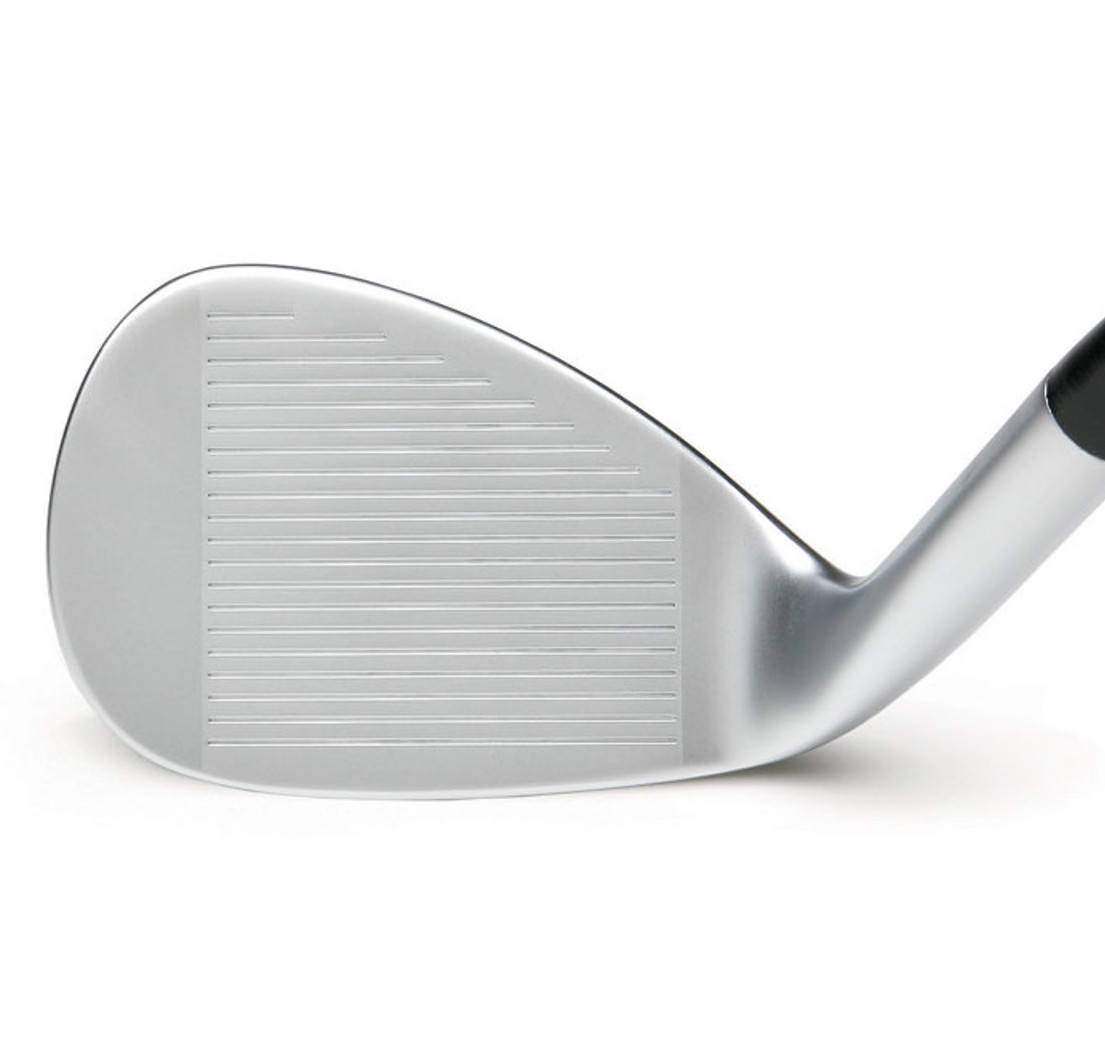
One side-effect of the relentless effort by major iron makers to win the “launch monitor wars” that pit one 6- or 7-iron against another is that the lofts throughout sets of irons have been continually strengthened to a point of what I consider ridiculousness. There are two major problems with this trend in specifications for sets of irons. The first is that to try to win the “launch monitor wars,” iron makers have to try to make their 6- and 7-irons go farther than the other guys’. That means making those mid-irons stronger in loft and using a bit of “trickery” by increasing the loft gapping between your higher-loft scoring clubs so that your “P-club” doesn’t get too strong, too (though modern “P-clubs” of 43-45 degrees of loft are really not “pitching wedges” at all).
Historically, iron lofts progressed through the set at four-degree loft intervals, and .5-inch length differentials. This wasn’t happenstance at all, it was the result of rigorous testing by professionals and average golfers. Those technical differences typically delivered consistent distance gapping from the pitching wedge down through the set.
A review of the specifications of almost every set of irons on the market today, however, will reveal that loft differentials are now five degrees between the short irons and as little as two degrees at the long end of the set. This is totally counter-intuitive to how you can improve your short iron and wedge precision. Why in the world would you want to increase the distance differences between your shorter irons, which is where you most need distance control precision? After all, a 6-iron shot that is 25 to 30 feet long or short is pretty darn good, but it sucks if you have a 9-iron or wedge in your hands.
Understand that the “holy grail” of distance in golf club design is the combination of high launch and low spin. Achieving this is relatively simple – put as much mass in the bottom of the golf clubhead as possible.
So, the second major problem caused by the “launch monitor wars” is how modern irons are designed. The early “solution” to longer-hitting mid-irons was extreme sole-weighting with thinner faces. The newer technologies we’re seeing in irons combine even faster faces with heavy tungsten inserts in the sole of the club.
But the problem with almost all irons on the market – especially in the “game improvement” category – is that this same design and technologies are applied throughout the “matched” set of irons and even into “wedges” that display that same design concept. And that’s where your prime scoring clubs are being compromised.
High launch and low spin are great in a driver or fairway wood, and maybe even desirable in your middle irons — but that is the exact opposite of what you need to achieve consistent distance precision in prime scoring range when you have a short iron or wedge in your hands.
Almost all accomplished players have learned to hit their short irons and wedges with a penetrating ball flight and lots of spin to stop the ball in its tracks once it hits the green. So why would you ever want to play short irons and wedges that have all their mass at the bottom, which is designed to deliver the exact opposite of what you should be seeking?
Now, let’s go back to the title of today’s post.
Either your 6- or 7-iron is 28 to 30 degrees of loft – but have you ever stopped to think that this loft is closer to that of your driver than to where your “wedge” lofts begin (around 45 degrees)? I feel certain that no golfer in the history of the world has ever proclaimed
“I really like my 7-iron. Can you make me a driver that looks just like it?”
In fact, from your 7-iron down to your driver, you likely have at least four, if not five, completely different clubhead designs in order to optimize performance at a given range of lofts. That iron design might evolve to a driving iron design a few degrees lower, then most likely to a hybrid design a few degrees lower than that, then to a fairway wood as lofts get below twenty degrees, and finally to a driver at 9 to 12 degrees.
So, if it takes four to five completely different clubhead designs to optimize performance at the long end of the set, how realistic is it that only one design throughout your set of irons can deliver the performance and precision you need at the short end?
I’ve always believed that every club in your bag has a specific purpose and expectation. Fairway woods, hybrids, and long irons are to get you close to or maybe even on the green from a long-distance approach. With middle irons (5 through 7 or 8), your goal is to get on the green within a reasonable distance, or certainly not to leave yourself a tough greenside save.
Your “money clubs” are those with lofts above 37 to 40 degrees, as this is where you have a chance to get close enough for the occasional one-putt, whether that is for a birdie, par, or bogey. And this is the end of your set where you likely have not spent the time to make sure it’s just right.
To accent just how important this part of your set really is, did you know (if you discount the fact that almost all so-called par-5 holes on the tour are really just long par 4s for those guys) the entire PGA Tour is over par outside 9-iron range?
Something to think about, for sure.
- LIKE59
- LEGIT18
- WOW4
- LOL2
- IDHT0
- FLOP4
- OB0
- SHANK3
-

 19th Hole2 weeks ago
19th Hole2 weeks agoTiger Woods delivered stinging message to major winner after denying him lift on private jet
-
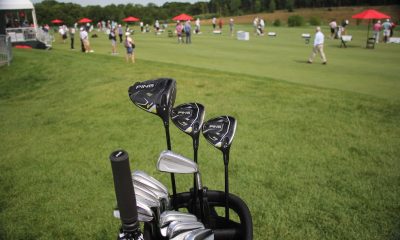
 Whats in the Bag2 weeks ago
Whats in the Bag2 weeks agoSeamus Power WITB 2023 (June)
-

 Whats in the Bag3 weeks ago
Whats in the Bag3 weeks agoOmar Morales WITB 2023 (June)
-

 Whats in the Bag3 weeks ago
Whats in the Bag3 weeks agoBlayne Barber WITB 2023 (June)
-

 Whats in the Bag3 weeks ago
Whats in the Bag3 weeks agoBen Carr WITB 2023 (June)
-
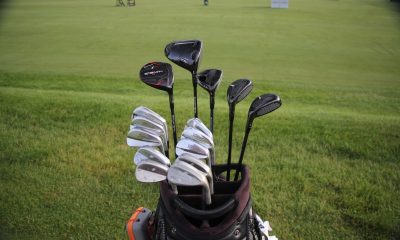
 Whats in the Bag2 weeks ago
Whats in the Bag2 weeks agoTom Hoge WITB 2023 (June)
-

 19th Hole3 weeks ago
19th Hole3 weeks agoJournalist alleges this is the ‘unforgivable’ act Phil Mickelson committed against Pat Perez and his wife
-
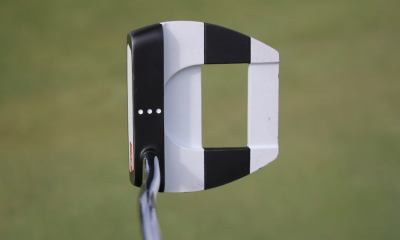
 News2 weeks ago
News2 weeks agoKeegan Bradley’s winning WITB: 2023 Travelers Championship













